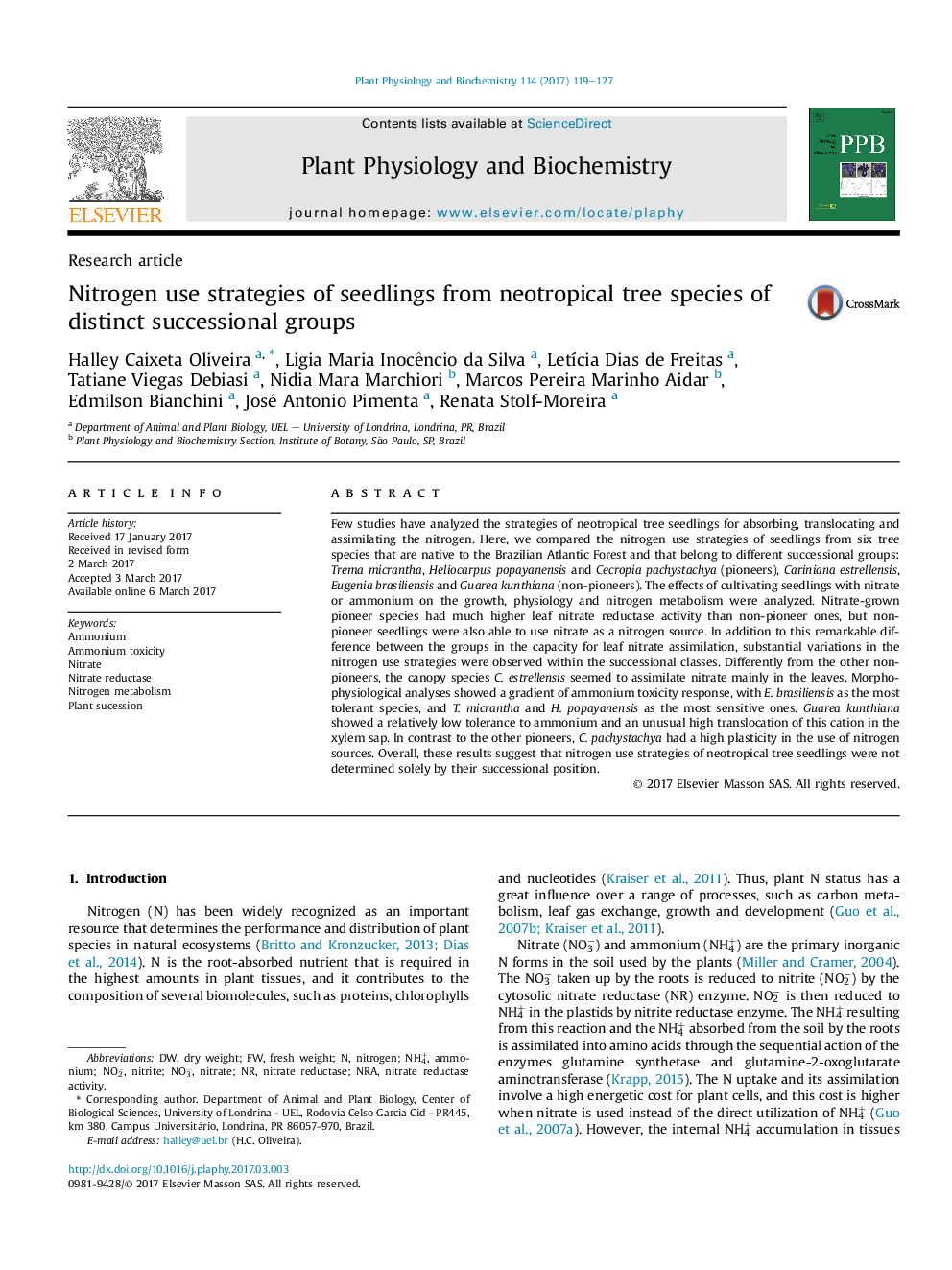| کد مقاله | کد نشریه | سال انتشار | مقاله انگلیسی | نسخه تمام متن |
|---|---|---|---|---|
| 5515584 | 1541907 | 2017 | 9 صفحه PDF | دانلود رایگان |
- Pioneer tree species have higher leaf nitrate reductase activity than non-pioneers.
- Pioneer and non-pioneer species are able to use nitrate and ammonium as N sources.
- A gradient in ammonium toxicity response is observed among neotropical tree species.
- Variations in N use strategies occur among species from the same successional group.
- N use strategies by neotropical trees are not only determined by their successional status.
Few studies have analyzed the strategies of neotropical tree seedlings for absorbing, translocating and assimilating the nitrogen. Here, we compared the nitrogen use strategies of seedlings from six tree species that are native to the Brazilian Atlantic Forest and that belong to different successional groups: Trema micrantha, Heliocarpus popayanensis and Cecropia pachystachya (pioneers), Cariniana estrellensis, Eugenia brasiliensis and Guarea kunthiana (non-pioneers). The effects of cultivating seedlings with nitrate or ammonium on the growth, physiology and nitrogen metabolism were analyzed. Nitrate-grown pioneer species had much higher leaf nitrate reductase activity than non-pioneer ones, but non-pioneer seedlings were also able to use nitrate as a nitrogen source. In addition to this remarkable difference between the groups in the capacity for leaf nitrate assimilation, substantial variations in the nitrogen use strategies were observed within the successional classes. Differently from the other non-pioneers, the canopy species C. estrellensis seemed to assimilate nitrate mainly in the leaves. Morphophysiological analyses showed a gradient of ammonium toxicity response, with E. brasiliensis as the most tolerant species, and T. micrantha and H. popayanensis as the most sensitive ones. Guarea kunthiana showed a relatively low tolerance to ammonium and an unusual high translocation of this cation in the xylem sap. In contrast to the other pioneers, C. pachystachya had a high plasticity in the use of nitrogen sources. Overall, these results suggest that nitrogen use strategies of neotropical tree seedlings were not determined solely by their successional position.
Journal: Plant Physiology and Biochemistry - Volume 114, May 2017, Pages 119-127
